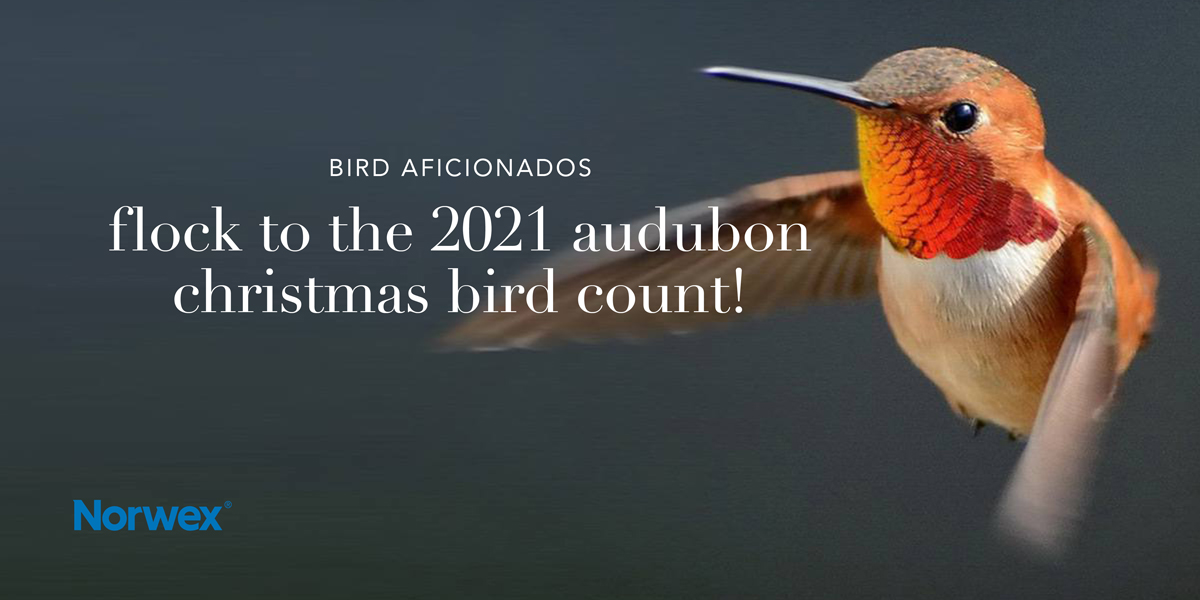

With the countdown to Christmas in full gear, here’s one more all-important event to add to your calendar: the National Audubon Society’s 122nd Christmas Bird Count (CBC). From December 14 through January 5, thousands of volunteer birdwatchers will join together to help conduct this annual early-winter census. Its mission? To provide a snapshot of how bird populations are faring throughout the Western Hemisphere.
The CBC’s efforts are far-reaching. For starters, they provide valuable data for scientific research. As populations of birds change, those fluctuations often indicate shifts in pollution levels, climate change, habitat loss and migration timing, among others. The more information that comes in, the easier it is for bird scientists to track patterns and similarities.
Evidence of any strong downward trends also helps wildlife organizations intervene in a timely manner. Say, for instance, a species is declining due to polluted water. That awareness can spur action to fight water contamination—a boon to both birds and other wildlife.
Credit U.S. ornithologist Frank Chapman for founding the event. Back in 1900, he organized a bird count as an alternative to what was then known as the Christmas Side Hunt—a tradition where local outdoorsmen would kill as many animals and birds as they could in a single day. Chapman’s motive was simple—and altruistic. Instead of hunting birds, his CBC census would count and observe them.
The numbers speak to the event’s popularity. On Christmas Day 122 years ago, 27 observers in 25 places throughout North America counted 18,500 individual birds belonging to 90 species.
Since that time, participation has continued to grow. According to Wikipedia, the 113th CBC (2012–2013) attracted 71,531 volunteers in 2,369 locations. The National Audubon Society now partners with Bird Studies Canada, the Gulf Coast Bird Observatory of Texas (responsible for CBCs in Mexico), the Red Nacional de Observadores de Aves (RNOA, National Network of Bird Observers) and the Instituto Alexander von Humboldt of Colombia.
Even more fun facts: The greatest number of bird species ever reported by a single Christmas Bird Count zone is 531, observed on December 21, 2013, on the eastern slope of the Andes in Ecuador. In the United States, the largest number was 250, on December 19, 2005, around Matagorda and Palacios, Texas.
Because the National Audubon Society considers the CBC a teaching opportunity, even those with limited experience are invited to participate. Newcomers will be teamed with a seasoned bird watcher who can share all the basics, including tips and tricks for quickly identifying species.
Here’s how it works:
To get involved in a nearby CBC, contact your local chapter. From there, you’ll be connected with an experienced Audubon birder (aka a count compiler). On an appointed day, volunteers will count every bird they see or hear within a designated 15-mile diameter zone called a Circle. And while there’s no charge to participate, some Audubon chapters may request a donation to assist in their ongoing operation.
See the map for Circles expected to be included in the 122nd CBC. (Green and yellow Circles are open for new participants, red Circles are full.) To arrange participation, email compilers prior to the event day.
Most CBC activities are outdoor walking tours—in a municipal park or forest or on private, state or federal property. Other options include driving, often along rural roads, or gathering at a local nature center or birding hotspot.
The National Audubon Society also offers these suggestions for optimizing your efforts:
To find the most birds, identify their food source.
Go early in the day—it’s when birds are most active. Also focus on spots that get a lot of sun.
Other less obvious places to find birds include outbuildings (like barns and sheds), manure piles, and dense shrubs and evergreens (especially in colder weather).
Bring binoculars—they’re a huge help in identifying birds from a distance.
Familiarize yourself with your route prior to your designated day. If you can’t visit in person, check it out on Google Maps.

Resources:
Thank you so much for sharing about the CBC! I’m a lifelong birder, and citizen efforts are crucial to getting scientists the data they need!
Mary, thank YOU for the work you do as a birder! We’re so glad we can help our feathered friends, together!